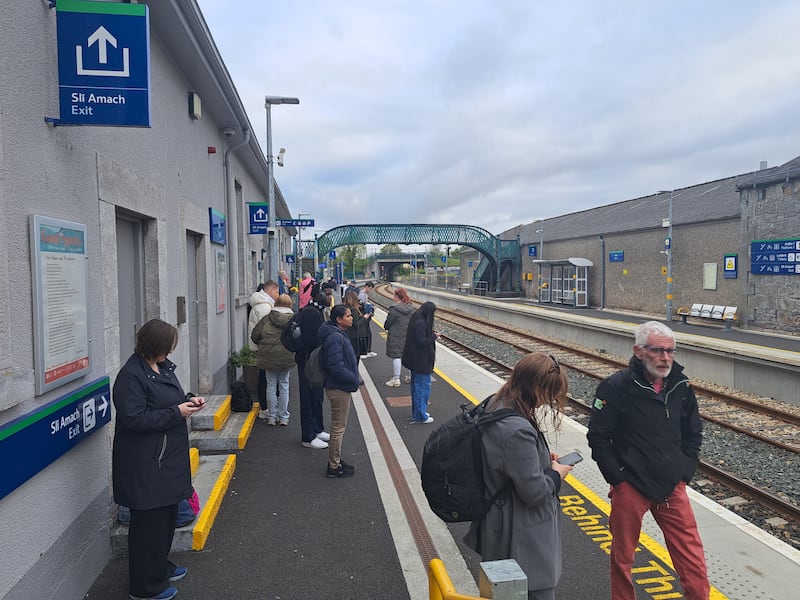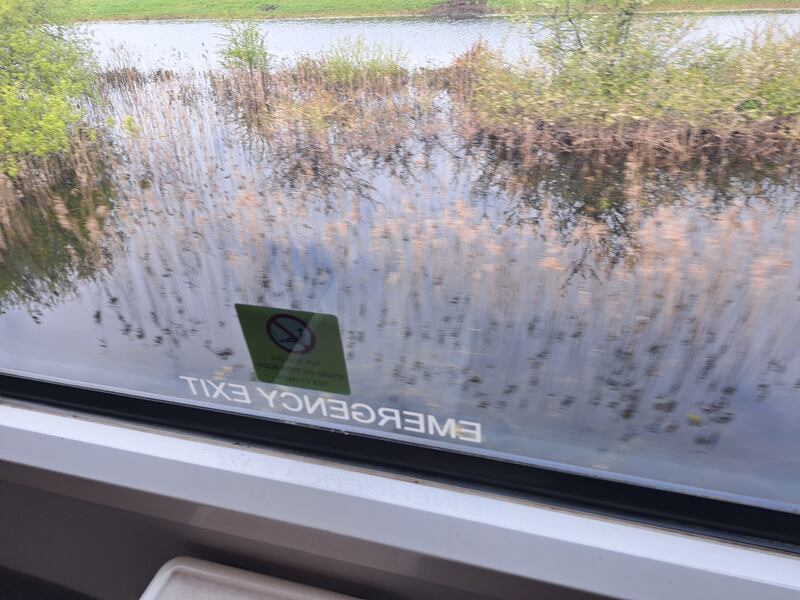The rail commuters of Ennis are used to having to rough it from time to time. For the past four generations, the track at Ballycar between the town and Limerick has flooded, rendering the line impassable on at least 20 occasions since 1929.
This problem has grown much more serious over the past 20 years, however, with major flooding events taking place in 1994, 1995, 2005, 2008, 2009, 2014, 2016, 2018 and again this year.
The exact cause of this increased incidence of flooding is unclear, with the effects of climate change and man-made alterations to the local topography through land reclamation thought to have played a role.
In 2020, engineering firm RPS completed an assessment for Iarnród Éireann, Clare County Council, the Office of Public Works, the Geological Survey of Ireland and the National Parks and Wildlife Service. This put the price of constructing a drainage solution to the flooding issue at €16.7 million.
RM Block
No agency has yet been identified to fund this work and as the track recently reopened after 33 days under water, commuters were far from convinced that a solution is near.
“The flooding on the line has been happening for years,” says Zara O’Grady, a student from Ennis who uses the service every day. “That won’t be fixed, there is no way in hell that it will ever be fixed. My three-year-old son is still going to have an issue with that flooding when he is older.”
O’Grady says the closure of the line had “a major impact” on her life, forcing her on to a replacement bus service put on by Iarnród Éireann which was not as quick as the train, meaning passengers were “arriving late every day”.
She adds: “The busses were okay but if I’m paying for the train, I want the train. We had to use our train tickets for the bus. So we had to come here [to the train station] buy our train tickets and then go back outside and catch the bus. It didn’t make sense.”
Commuters have quickly returned to the service since it reopened on April 20th, with more than 50 people waiting for the 7.40am commuter train on Wednesday. About 10 minutes after leaving Ennis, the train slows to a crawling pace as it approaches Ballycar.

Flood waters, visible in every direction, lap against the base of the track, a sign that the return of heavy rain could necessitate another line closure.
Ryan McCabe uses the train regularlyto travel from Ennis to college at at Dublin City University.
“It was a real nuisance in the sense that it limited the flexibility of how I got from Ennis to Limerick and then on to Dublin. Most of the time I needed my dad to drop me into Limerick, or something else would have had to happen,” he says.
“I didn’t take the bus replacement option, it was more of a nuisance to get the bus than anything. I don’t know will it ever be fixed with the way the Government are at times and Irish Rail as well, I don’t know will it ever happen.”
Ballycar resident PJ Ryan, an independent member of Clare County Council, believes a much cheaper solution is available to Iarnród Éireann should it take advantage of local knowledge.
“There is a solution to this problem that wouldn’t cost anything like the kind of money being mentioned. There is natural drainage from swallow holes that could be reopened and used to solve this problem,” he says.
“Iarnród Éireann would be much better off talking to the local farmers rather than spending huge amounts of money on new consultancy reports and engineers, as has happened again and again over the past 30 years.
“If you speak to local farmers, they will tell you that there were these large swallow holes that were filled up over time and that probably created some of this problem. They would have been filled for land reclamation in the past but this could be reversed relatively easily.
“They [Iarnród Éireann] have already raised the railway line [in 2003] to no real benefit to anyone.”

A spokesman for Iarnród Éireann said the flood mitigation options set out in the 2020 RPS report remain the carrier’s preferred course of action.
“Iarnród Éireann believes the report meets the desired objective to identify the most appropriate technically feasible drainage solution to address the flooding at Ballycar.
“The indicative cost for the proposed solution is €16.7 million including Vat [2020 estimate], and for this project to proceed a funding source will need to be identified by the Exchequer, and, given the works are away from railway property, a responsible agency nominated.”
[ Ecological tragedy in Clare heralds imminent water crisis in IrelandOpens in new window ]
Iarnród Éireann said the report has been issued to the relevant departments and agencies for their consideration. “When a funding source is identified this will permit the project to progress with the steps involved including the appointment of a consultant and the progression of the project through preliminary and detailed design.”
A spokesman for Clare County Council declined to comment on the flooding issue in Ballycar but said Iarnród Éireann was the project lead for all proposed works in the area.
- Sign up for push alerts and have the best news, analysis and comment delivered directly to your phone
- Find The Irish Times on WhatsApp and stay up to date
- Our In The News podcast is now published daily - Find the latest episode here

















